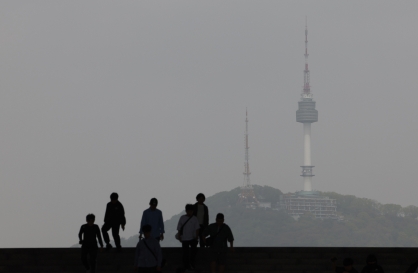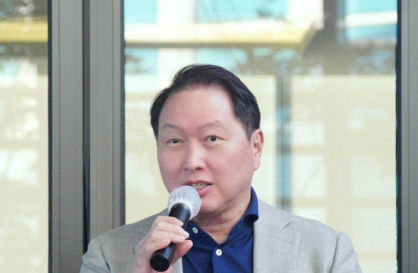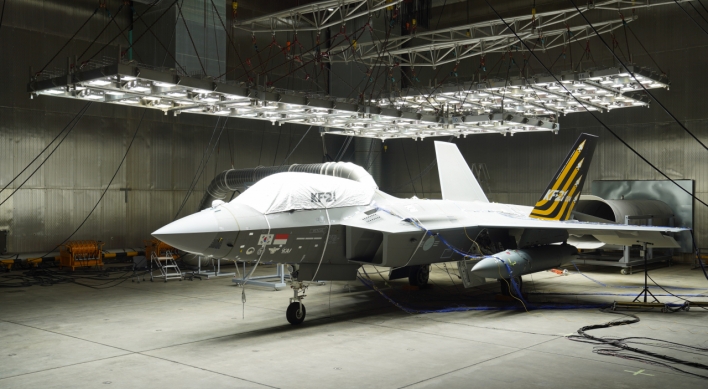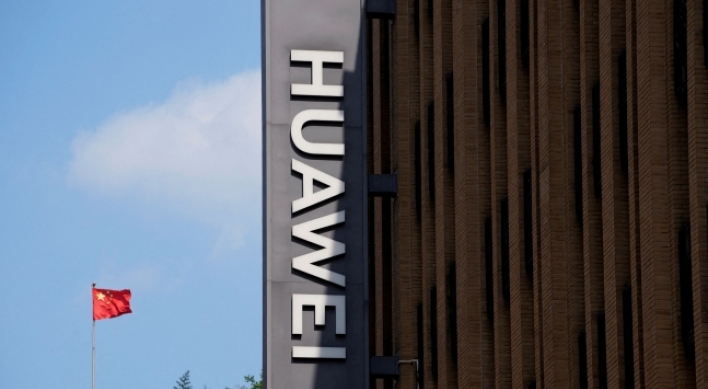The following is the third in a series of articles focusing on ways to promote cooperation between Korea and the 10 member countries of the Association of Southeast Asian Nations on the occasion of the Korea-ASEAN summit scheduled for June 1-2 in Jeju. - Ed.
The upcoming Korea-ASEAN summit on June 1-2 in Jeju represents Korea`s belated effort to be a major player in East Asia by strengthening its relations with ASEAN. This organization consists of 10 countries: Indonesia, Malaysia, Philippines, Singapore, Thailand, Brunei, Vietnam, Laos, Myanmar and Cambodia. While Korea`s effort surely embodies a refreshing break with the recent past, when the focal point of its foreign policy was the Korean peninsula and Northeast Asia, Korea will face severe competition from China and Japan, who have raced against each other to woo ASEAN countries and shore up influence in the region.
language="JavaScript"src="/khjs/banner/article_340.js">
Korea joins the competition
The 10 heads of the ASEAN countries and the ASEAN Secretary General, Surin Pitsuwan, will participate in the Korea-ASEAN summit at the invitation of Korean President Lee Myung-bak to commemorate the 20th anniversary of the establishment of a dialogue partnership. The participants will discuss collaboration efforts between Korea and ASEAN in the past 20 years, plus global issues such as the financial crisis and climate change, according to Cheong Wa Dae. On the sidelines, there will also be a CEO meeting aimed at enlarging business exchanges between Korea and ASEAN and various cultural events to celebrate the 20th anniversary of ties.
The summit epitomizes Korea`s effort to woo ASEAN as a group. Since launching an official dialogue with ASEAN 20 years ago, Korea has steadily increased ties with ASEAN. Seoul signed a comprehensive cooperative partnership agreement with ASEAN in 2004 and then concluded a free trade agreement with the group in the areas of merchandise and services in 2007. Korea is expected to sign an investment agreement with ASEAN, which will remove the final hurdle to the creation of a free trade area between them. This is expected to further increase bilateral trade between them, which totaled $90.2 billion in 2008, making ASEAN Korea`s third-largest trading partner.
The Jeju event will work as an opportunity to demonstrate Korea`s willingness to strengthen its presence in Southeast Asia, which in turn would contribute to expanding the country`s diplomatic sphere. Early this year, Lee launched his "New Asia Initiative," centering on upgrading relations with ASEAN, where Seoul`s influence lags behind that of China and Japan.
"While Japan has provided a vast amount of assistance and China`s influence is increasing, I feel Korea is a little alienated," Lee said during a meeting with Korean diplomats based in East Asia in March 2009. "I hope we will do really well with the 10 members of the Association of Southeast Asian Nations."
It is encouraging to see a Korean leader paying attention to the wider region of East Asia again when he discusses the country`s foreign policy. After making efforts to lead regional cooperation in East Asia for a brief time period from the late 1990s and early 2000s, Seoul`s foreign policy focus suddenly scaled down under "the era of Northeast Asia." Moving beyond the peninsula and Northeast Asia, the "New Asia Initiative" stands for a break with the recent past, though the concept of the initiative is not fully known.
In trying to expand the sphere of its foreign policy, however, Seoul will face strong competition from both China and Japan, which have strenuously tried to strengthen their presence through their abundant power and resources.
Competition between China and Japan
China and Japan have been embroiled in intense competition against one other to woo ASEAN countries since the rise of China. China bolstered its presence in Southeast Asia by proposing the China-ASEAN FTA during the Leaders` Meeting of ASEAN+3 in Singapore in 2000. To the surprise of many in the region, in the following November, then-Chinese Premier Zhu Rongji and the ASEAN leaders reached an agreement to realize the FTA before 2010.
China believed that building a cooperative relationship with ASEAN would well-serve its interest in creating a peaceful environment in the region, which it needed to develop its economy. In addition, by forming a cooperative relationship with ASEAN, Beijing tried to quell growing concerns about its influence and potential dominance. Lastly, by bolstering its relations with ASEAN, China hoped to prop up its national image as a responsible power, which it tried to build after the Asian financial crisis of the late 1990s.
Japan, which had been one of ASEAN`s most important economic partners and a major contributor to development cooperation with ASEAN countries, was taken by surprise by Beijing`s bold move. Tokyo then sought to sustain its leadership in the region, which had been negatively impacted by the Asian financial crisis and its own economic slowdown.
In early 2002, then-Japanese Prime Minister Koizumi visited five original member countries of ASEAN, putting forward the "Koizumi Initiative" and signing an FTA with Singapore, its first bilateral FTA.
Since then, the competition between China and Japan has intensified. China has generally kept ahead by moving faster in promoting cooperation with ASEAN. At the ASEAN-China Summit in Phnom Penh in November 2004, it signed the "Framework Agreement on Comprehensive Economic Cooperation between ASEAN and China," which provided the groundwork for the eventual establishment of one of the largest free trade areas in the world by 2010. As China and ASEAN engaged with each other, trade volume between them began to skyrocket, hitting $100 billion in 2005 and then surpassing $200 billion in two years.
China`s offensive to woo ASEAN has gradually gone beyond the economic arena. In 2003, China formally signed the Treaty of Amity and Cooperation in Southeast Asia (TAC), which is the basic treaty of ASEAN, as well as a document for strategic partnership laying the foundations for more cooperation. In October 2006, to mark the 15th anniversary of the establishment of China-ASEAN dialogue, China hosted a commemorative summit with ASEAN, where Chinese Premier Wen Jiabao declared that China-ASEAN relations were at "their historical best."
<**2>
In an attempt to resurrect its relations with ASEAN, Tokyo hosted the ASEAN-Japan Summit in December 2003, three years ahead of the China-ASEAN summit. Japan attempted to sustain its leadership in the region by promoting an "East Asia Community" and more economic integration through a comprehensive economic partnership in the "Tokyo Declaration" adopted at the summit. Japan also played catch-up with China by declaring its plan to sign up with the TAC, which it did in July 2004.
In April 2008, Japan signed a comprehensive economic partnership agreement with ASEAN. It covered such fields as trade in goods, trade in services and investment.
Rivalry between the two countries was on display again when the East Asian countries negotiated to finalize plans for implementing the Chiang Mai Initiative early this month. With huge foreign reserves and growing economic muscle, China vied for regional leadership by offering more to the multilateral emergency fund, which would finance the ASEAN+3 countries hit by the global financial crisis. Despite its own severe recession, Japan tried not to be surpassed by China. In a clear attempt to sustain its leadership in the region, Japan committed $38.4 billion to the fund; exactly the same amount that China did.
Multiplying regional frameworks, stalled community building
As these events make clear, the fierce competition between China and Japan has sometimes facilitated regional cooperation in East Asia. China`s preemptive move and Japan`s catch-up have occasionally worked to further collaboration among Northeast Asian states on the one hand and ASEAN on the other. A case in point is the bilateral FTAs that have been built up competitively in the region: China`s bold initiative to build an FTA with ASEAN led Japan to counter China`s effort by doing the same, which has in turn triggered Korea to follow suit.
This, however, does not suggest that the competition between China and Japan has contributed to community building in the region. In fact, the opposite has happened; although regional frameworks have multiplied in the region, moves to build an East Asia community have stalled, with China and Japan supporting alternative frameworks.
China prefers ASEAN+3 (Korea, China and Japan) to the East Asia Summit that includes outside countries such as Australia, New Zealand and India. Believing that it would be easier to wield influence in ASEAN+3 because, among other reasons, it would not include countries closely allied with the United States, China has repeatedly promoted ASEAN+3 as the main venue for regional community building, while holding back the EAS it once supported.
Japan, on the other hand, has tried to make the EAS the main channel for community building because it could get extra help from countries like Australia and India in containing China`s rising influence. To buttress the status of the EAS, which was originally to replace ASEAN+3, Tokyo has promoted the plan that the East Asian FTA should comprise all EAS member states. In advance, by promoting "value diplomacy" that emphasizes "universal values" such as democracy, freedom and human rights, Japan has tried to dominate the EAS.
Due to the competition between China and Japan, regional cooperation in East Asia is going nowhere within the ASEAN states, which as a group are supposed to drive East Asian institution building. Instead they are divided, with some preferring ASEAN+3 while others support the EAS.
Korea has wavered between the two frameworks: It seemed to prefer ASEAN+3 while its relations with Japan were strained during the previous administration, but the New Asia Initiative`s efforts to broaden its diplomatic horizons will probably lead Korea to tilt toward the EAS.
What Korea can do
When Korea tries to shore up its influence in Southeast Asia, it will face severe competition with China and Japan. Therefore, Korea needs to figure out its foreign policy strategy in the region. To not be swept aside by the competition between the two East Asian giants, Korea must come up with a foreign policy strategy that is not only well thought-out but also feasible.
Neither competing against the two giants nor choosing one side over another is an option for Korea. Neither seems possible; nor will either serve Korea`s interest. It would be difficult for Korea to match either China or Japan, as both are ahead of Korea in nurturing relationships with ASEAN and are better positioned in terms of the support they can provide. Taking a side would not serve Korea`s interests because it would rather aggravate division and competition in the region, which would not contribute to Korea`s efforts to enlarge its diplomatic sphere.
Strengthening efforts to build relations with ASEAN is a must. In addition to further increasing trade with and investment in ASEAN, we need to pay attention to building up trust with ASEAN by providing assistance in the areas it needs most. ASEAN countries would welcome our experience in developing their economies and our support in areas like education and technology.
At the same time, Korea needs to try to coordinate and ameliorate the competition between China and Japan. We need to make it clear to both China and Japan that they need to cooperate with each other to contribute to community building in the region. Here we could tap the cooperation and trust with ASEAN we have nurtured, in that ASEAN shares our interests in seeing China-Japan relations improve. By fostering a stronger relationship with ASEAN, Korea could be in an advantageous position to make regional cooperation in East Asia move again, which in turn would contribute to enlarging Korea`s foreign policy realm.
By Kim Jae-cheol



![[AtoZ Korean Mind] Does your job define who you are? Should it?](http://res.heraldm.com/phpwas/restmb_idxmake.php?idx=644&simg=/content/image/2024/05/06/20240506050099_0.jpg&u=)














![[K-pop's dilemma] Is Hybe-Ador conflict a case of growing pains?](http://res.heraldm.com/phpwas/restmb_idxmake.php?idx=642&simg=/content/image/2024/05/07/20240507050746_0.jpg&u=)